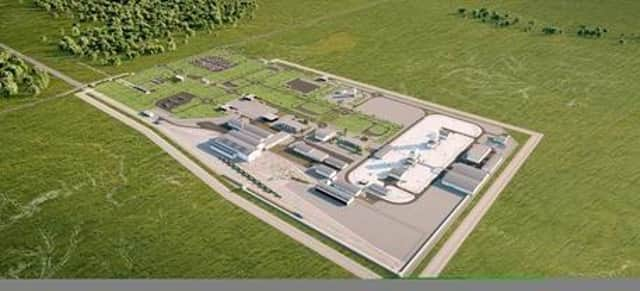Thousands of jobs could be created by Geological Disposal Facility (GDF)


The multi-billion pound facility, known as a Geological Disposal Facility (GDF) aims to help dispose of around 10 percent of the UK’s nuclear waste in a more secure location for thousands of years.
The surface site itself, which could replace the former gas terminal, would be around 1sqkm, with the rest of the facility set 1,000 metres underground 5-10km out to sea. It would include a mix of engineered and natural barriers between 200-1,000 metres underground.
Advertisement
Advertisement
It will cost between £20-53billion to build depending on geology, according to the company.
A document released on Thursday by Nuclear Waste Services (NWS), who are the government agency behind the plans, said the programme would “create thousands of skilled, well-paid jobs” over its initial 175-year life-span.
It includes 4,000 jobs within the first 25 years and thereafter an average of 2,000 people working around the site in any given year.
Employment includes workers at the facility itself, in the supply chain and retail or leisure industries created in response to the increased workers.
Advertisement
Advertisement
The roles would include a range of disciplines such as engineering, science and technical, trades, operations, and business functions. Around 75% of roles would be for candidates with qualifications equivalent to A-Level or below.
NWS said the facility would also attract further investment in the local area resulting in extra employment created, as the agency is “committed to recruiting locally where possible”.
Siting director Simon Hughes explained: “The great majority of jobs that we need would not need to be brought in from elsewhere because the people are here who can grow into those roles.
“There’s absolutely no need to parachute people in from outside. This is a really long-term project and it it only succeeds if it continues to have a great relationship with people who live around it.
Advertisement
Advertisement
“I know that parachuting thousands of people to operate it would not build the sorts of relationship that we and and people who live around the site would want.”
He added that the relationship with the community at the moment was wonderful and that even those who had disagreed with the project had been warm, thoughtful people with excellent questions.
The long time-frame for the project would mean education and training initiatives could also be planned for local residents. The GDF wants to start getting people ready from 2028.
Funding will also be available over the lifetime of the project to improve local infrastructure and services including rail, road and health services.
Advertisement
Advertisement
NWS still has to work out the details of how it would achieve its plans, and hoped to work with local educational institutions, but said that it would be willing to create new facilities for training if needed.
“We’ve made a really strong commitment that we will train people locally, so they can benefit from the opportunities,” said Simon.
Jon Collins Interim Chair of Theddlethorpe GDF Community Partnership said further work was needed to identify the specific impacts.
“We want to commission local studies, tailored to the area of Theddlethorpe and Mablethorpe, and surrounding villages. This will explore the job needs for the area if the GDF were sited here, looking at the current skills base and highlight the opportunities for jobs, training, and skills development for future generations.
Advertisement
Advertisement
“The siting of a GDF here, could enable the area to diversify its workforce, with a variety of higher paid, higher-skilled year-round jobs.”
Karen Wheeler, Nuclear Waste Services Deputy CEO/ Major Capital Programmes Director, said: “A GDF will be one of the biggest infrastructure programmes in the UK and provide a major investment for the local host community and its economy, as well as being a vital national project.
“The long-term nature of the project provides a unique opportunity to develop skills, expertise and sustainable jobs for a local community.”
GDF continues to search for a UK site in a range of locations. As well as Theddlethorpe, they are also exploring sites in Mid and South Copeland, and Allerdale in Cumbria.
Advertisement
Advertisement
The plans have sparked opposition campaigners into action with a number of protests already held against the plans.
Campaigners fear the move will spoil the Lincolnshire countryside, impact on highways and put off tourists.
If approved, work to build the GDF won’t start for another 10-15 years and will take a further 25 years to complete the initial build. It will then move into a rolling construction creating, filling and sealing one section at a time.
A working group to discuss the facility was set up in October last year and includes Lincolnshire County Council and East Lindsey District Council members.
Advertisement
Advertisement
This moved to a Community Partnership in June which is seeking members from business, voluntary and community sectors as well as the local authorities.
This will cover the rest of the decision-making process over the next 10-15 years until a test of support (such as a referendum) is carried out.